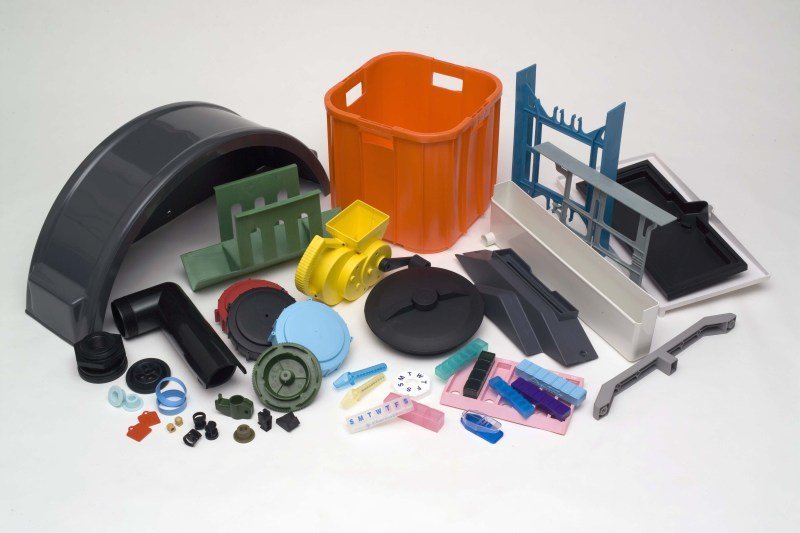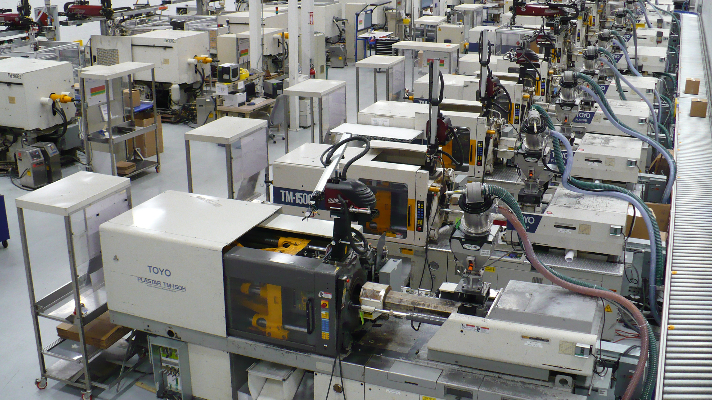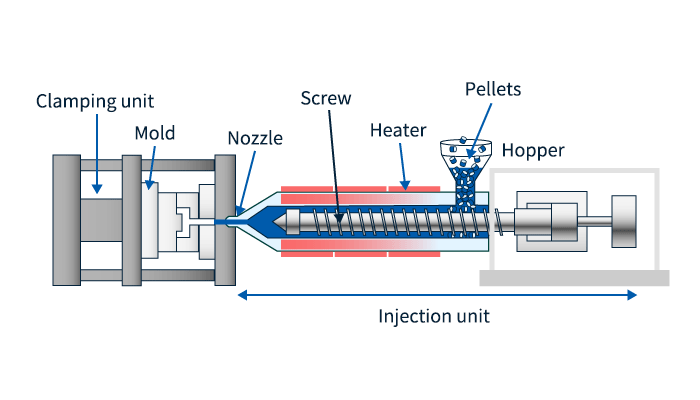Recognizing the Fundamentals of Plastic Injection Molding Procedures
Plastic shot molding serves as a keystone of contemporary manufacturing, providing a systematic strategy to creating complicated components with accuracy. Checking out these vital aspects could disclose exactly how even minor adjustments can lead to substantial enhancements in manufacturing outcomes, raising inquiries concerning the capacity for innovation in this well-known procedure.
What Is Plastic Injection Molding?
Plastic injection molding is an extensively utilized production process that changes thermosetting and thermoplastic products into specific and complex forms. This technique is favored for its capacity to produce high volumes of the same parts with exceptional precision, making it an essential approach in various markets, consisting of automobile, customer items, and medical tools.
The procedure involves melting the picked plastic product and injecting it into a mold and mildew under high pressure. The mold, made to the specifications of the preferred component, permits the liquified plastic to form as it strengthens and cools down. As soon as the product has solidified, the mold and mildew is opened up, and the ended up part is ejected.
Plastic shot molding offers a number of advantages, consisting of reduced waste, uniformity in production, and the capability to integrate complex layouts that might be testing with various other manufacturing methods. Additionally, it supports a broad range of materials, each supplying special residential properties that can be customized for details applications. As sectors remain to introduce, plastic shot molding continues to be at the center, making it possible for the growth of sophisticated products that satisfy progressing consumer demands.
The Injection Molding Refine
The shot molding process is a sophisticated strategy that entails several essential stages to generate top quality plastic elements. Plastic pellets are fed right into a heated barrel where they are melted right into a thick liquid. This molten plastic is then infused under high pressure into a precision-engineered mold, which shapes the material right into the wanted form.
As soon as the mold and mildew is filled up, the plastic is allowed to cool and strengthen, taking the form of the mold cavity. Air conditioning time is vital, as it impacts the cycle time and the final properties of the shaped part. After sufficient cooling, the mold and mildew opens, and the ended up element is expelled utilizing ejector pins.

Materials Utilized in Injection Molding
Various materials can be utilized in the injection molding process, each offering unique homes that accommodate details applications. One of the most commonly used products consist of thermoplastics, thermosetting plastics, and elastomers.

Thermosetting plastics, like epoxy and phenolic resins, undertake a chemical change during the healing procedure, resulting in an inflexible, inflexible structure. These products are ideal for applications needing high warmth resistance and structural integrity, usually used in automobile components and electric insulators.
Elastomers, consisting of silicone and rubber-based materials, offer versatility and strength. Their unique residential properties make them ideal for applications that demand elasticity, such as seals and gaskets.
Furthermore, specialty products like bio-based plastics and composites are acquiring traction for their environmental advantages and improved efficiency qualities, expanding the range of shot molding applications in numerous sectors. Comprehending the buildings of click to find out more these materials is crucial for picking the suitable kind for details projects.
Advantages of Injection Molding
Injection molding attracts attention as a highly efficient check out this site production procedure that supplies countless benefits for creating complicated parts with precision. One of one of the most substantial advantages is the capability to produce elaborate designs that would certainly be impossible or challenging to attain with various other techniques (Plastic Injection Molding). The process permits limited tolerances and comprehensive features, making sure top notch components
Furthermore, injection molding is understood for its rapid manufacturing capacities, making it an excellent selection for high-volume production. When the mold and mildew is produced, components can be generated promptly, decreasing preparations and enhancing total performance. This efficiency not only lowers manufacturing expenses yet likewise provides an one-upmanship in the market.
The versatility of products made use of in injection molding further improves its appeal. A large range of thermoplastics and thermosetting polymers can be used, allowing makers to select products that best satisfy their details demands, consisting of warmth, strength, and adaptability resistance.
Moreover, the process decreases waste, as excess product can typically be reused and recycled. This sustainability facet adds to a minimized ecological influence, making injection molding a liable manufacturing selection. Overall, the advantages of injection molding make it a recommended technique for many industries.
Aspects Influencing Item Top Quality
While countless factors can influence product high quality in injection molding, comprehending these aspects is vital for accomplishing optimal results. Trick elements consist of material option, refining criteria, and mold and mildew layout.
Product selection plays an essential function, as various polymers exhibit unique residential properties that impact flowability, toughness, and thermal stability. Insufficient material choice can bring about defects such as warping or incomplete dental filling.
Processing criteria, including cycle, temperature, and pressure time, should be meticulously controlled. Variants in these setups can lead to disparities partly dimensions and surface finish. Exceedingly high temperatures might cause deterioration of the polymer, while insufficient stress can result in brief shots.
Mold style is similarly important, as it figures out the flow of the molten plastic and the cooling procedure. Poorly created mold and mildews may cause irregular cooling prices, leading to dimensional errors and residual stress and anxieties.

Conclusion
In conclusion, plastic injection molding serves as an essential manufacturing procedure that makes it possible for the reliable manufacturing of high-quality parts. Mastery of the injection molding procedure, including the understanding of materials and the influence of different variables on product top quality, is important for attaining optimum outcomes. The advantages of this method, such as cost-effectiveness and design flexibility, additional emphasize its value throughout numerous markets, solidifying its status as look at more info a preferred selection for high-volume manufacturing.
Plastic shot molding serves as a cornerstone of modern-day production, providing a methodical strategy to generating complicated parts with precision.Plastic shot molding uses several advantages, including minimized waste, consistency in manufacturing, and the capability to integrate complex styles that may be challenging with various other producing techniques (Plastic Injection Molding). As industries proceed to innovate, plastic shot molding continues to be at the center, making it possible for the development of innovative items that satisfy developing consumer needs
The shot molding process is a sophisticated technique that involves several key phases to produce top notch plastic parts.In conclusion, plastic shot molding offers as a vital production procedure that makes it possible for the effective manufacturing of high-quality components.